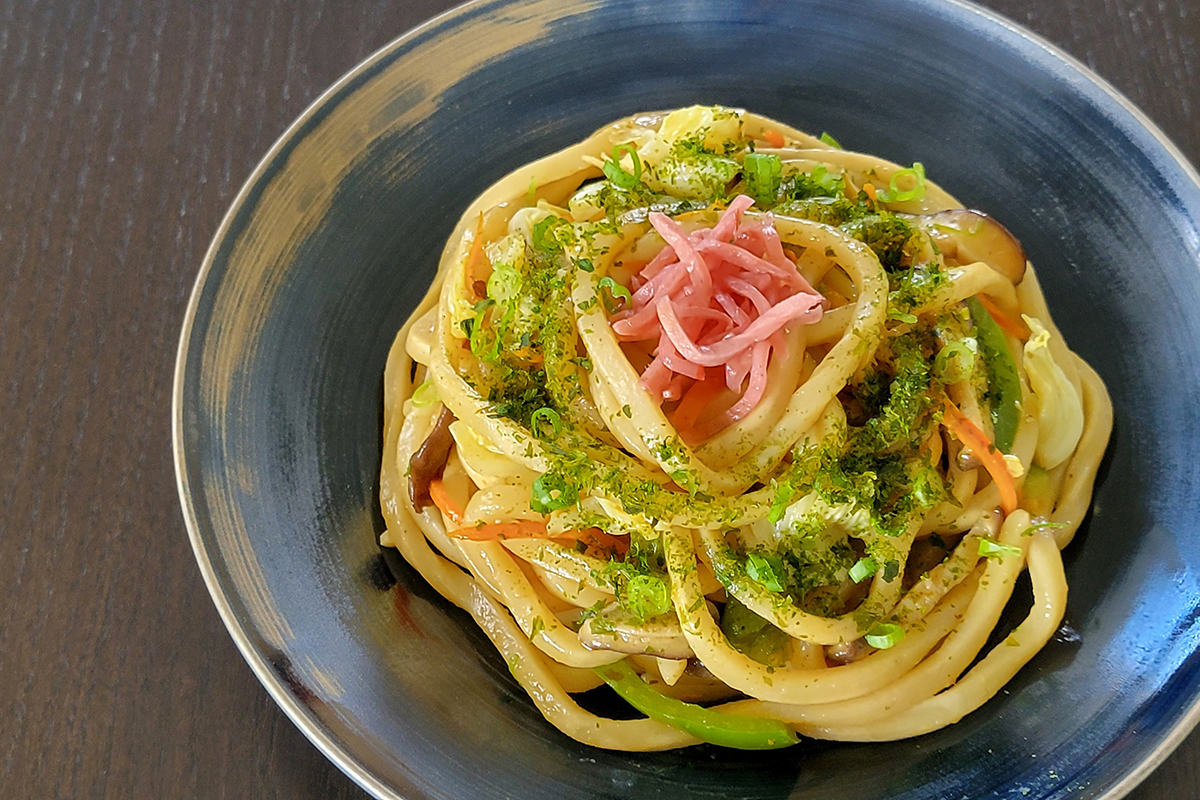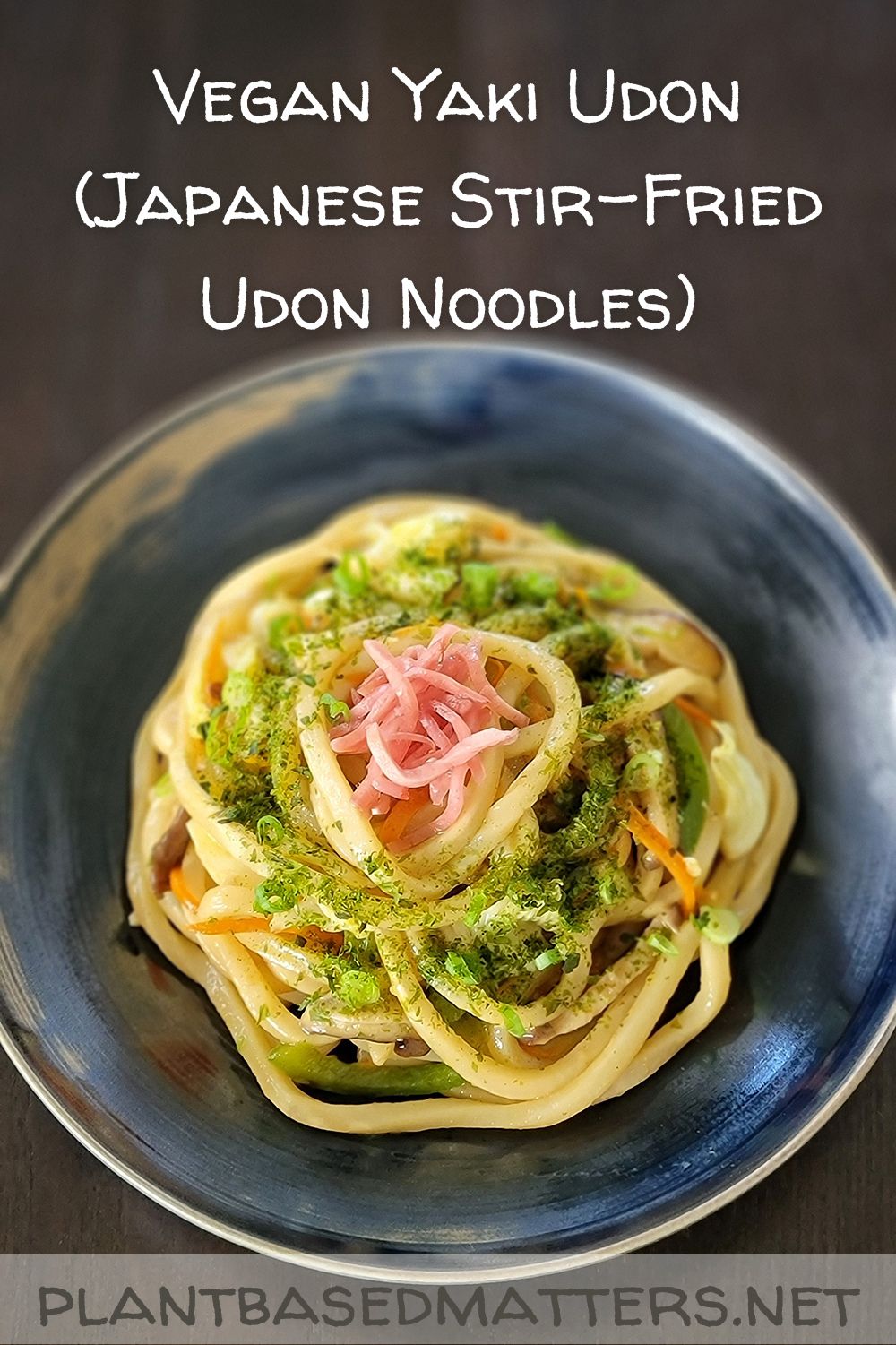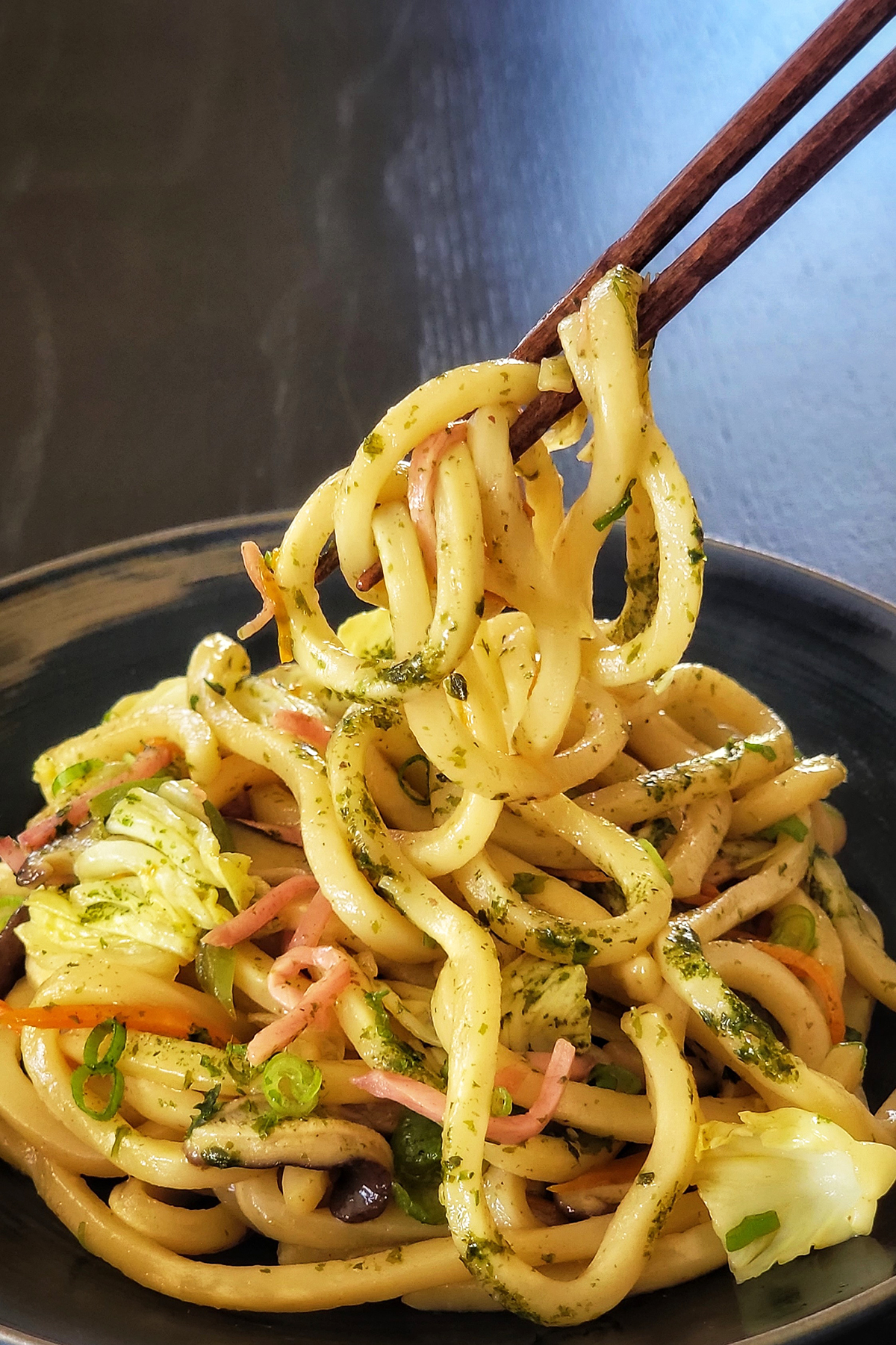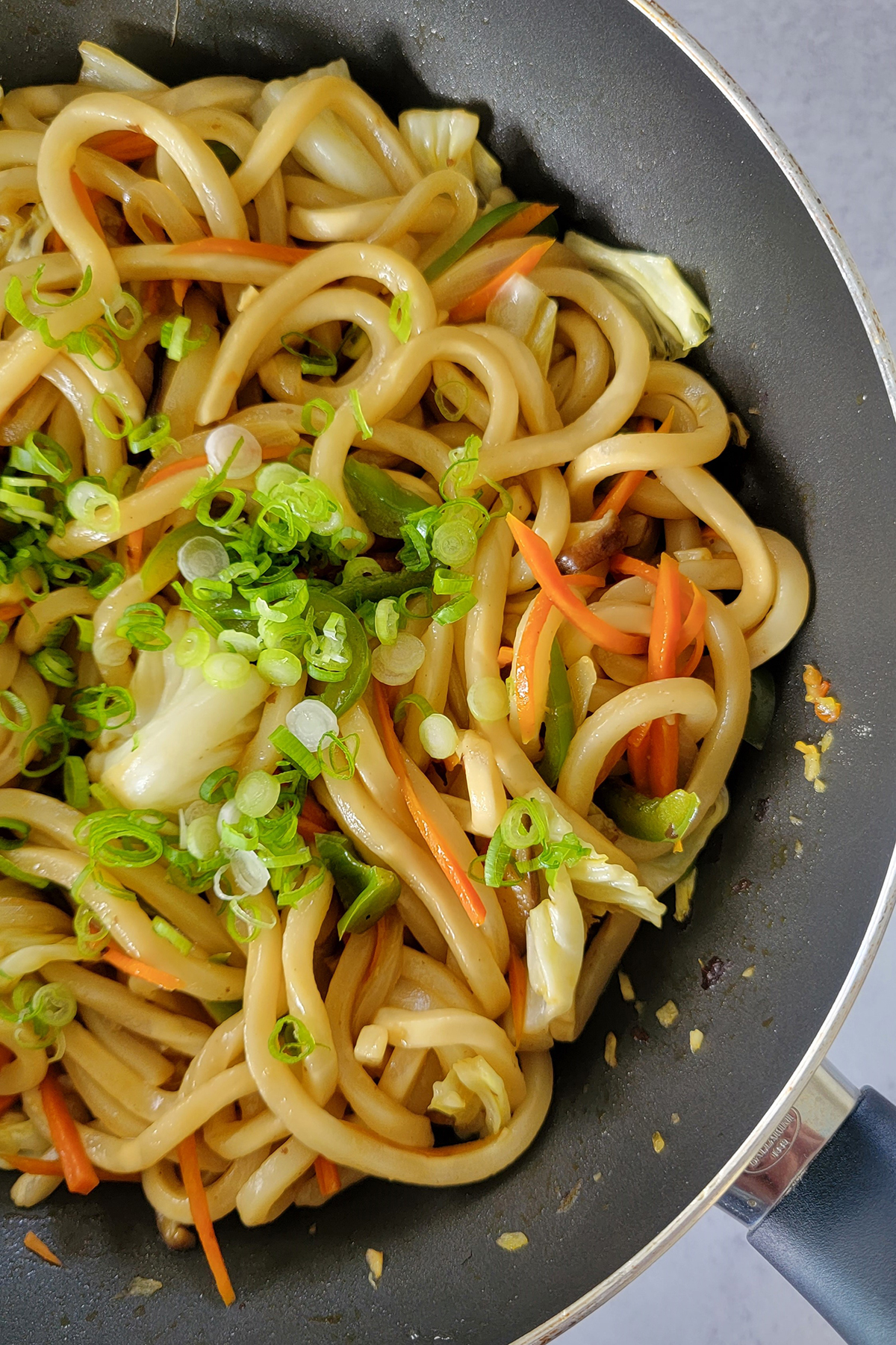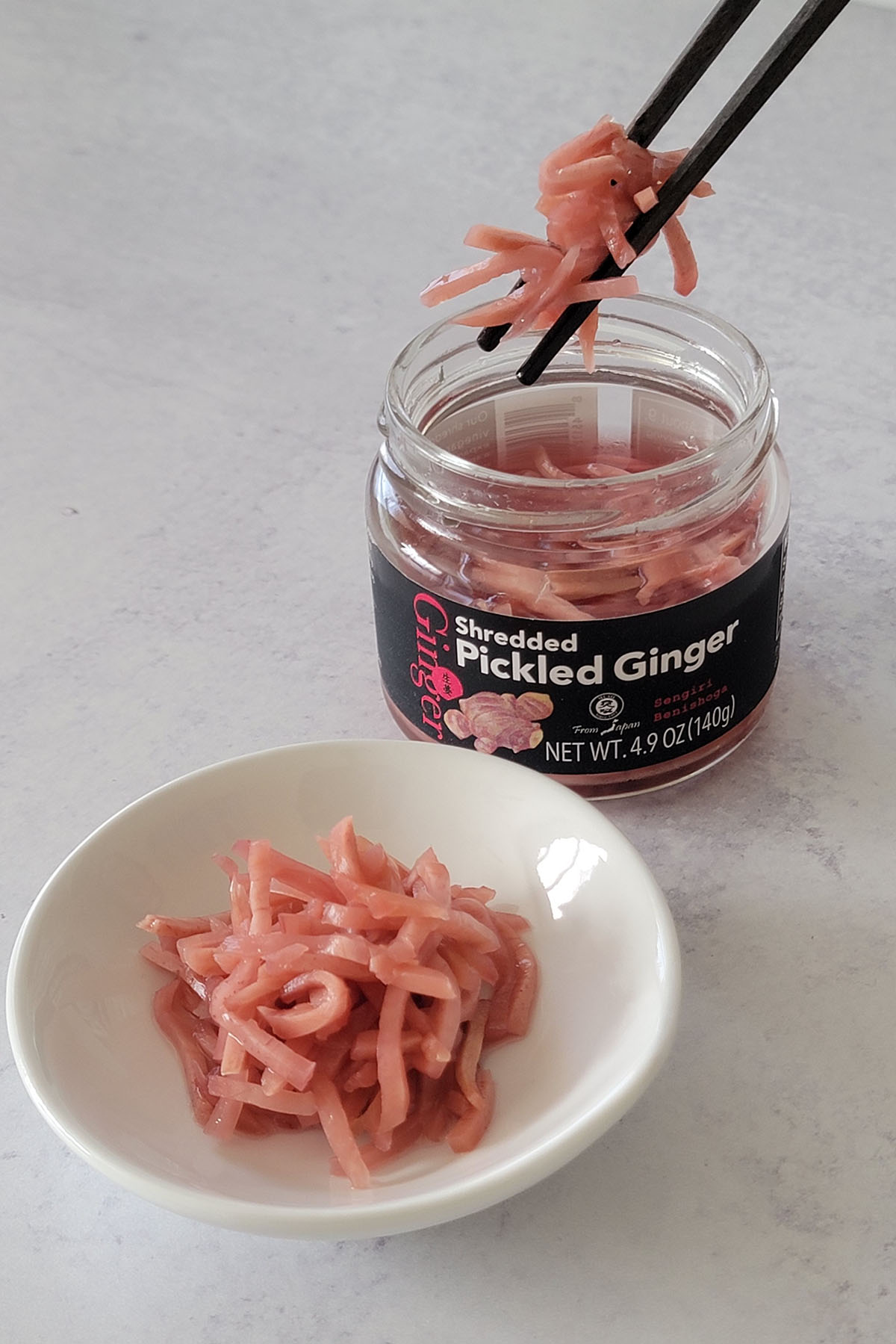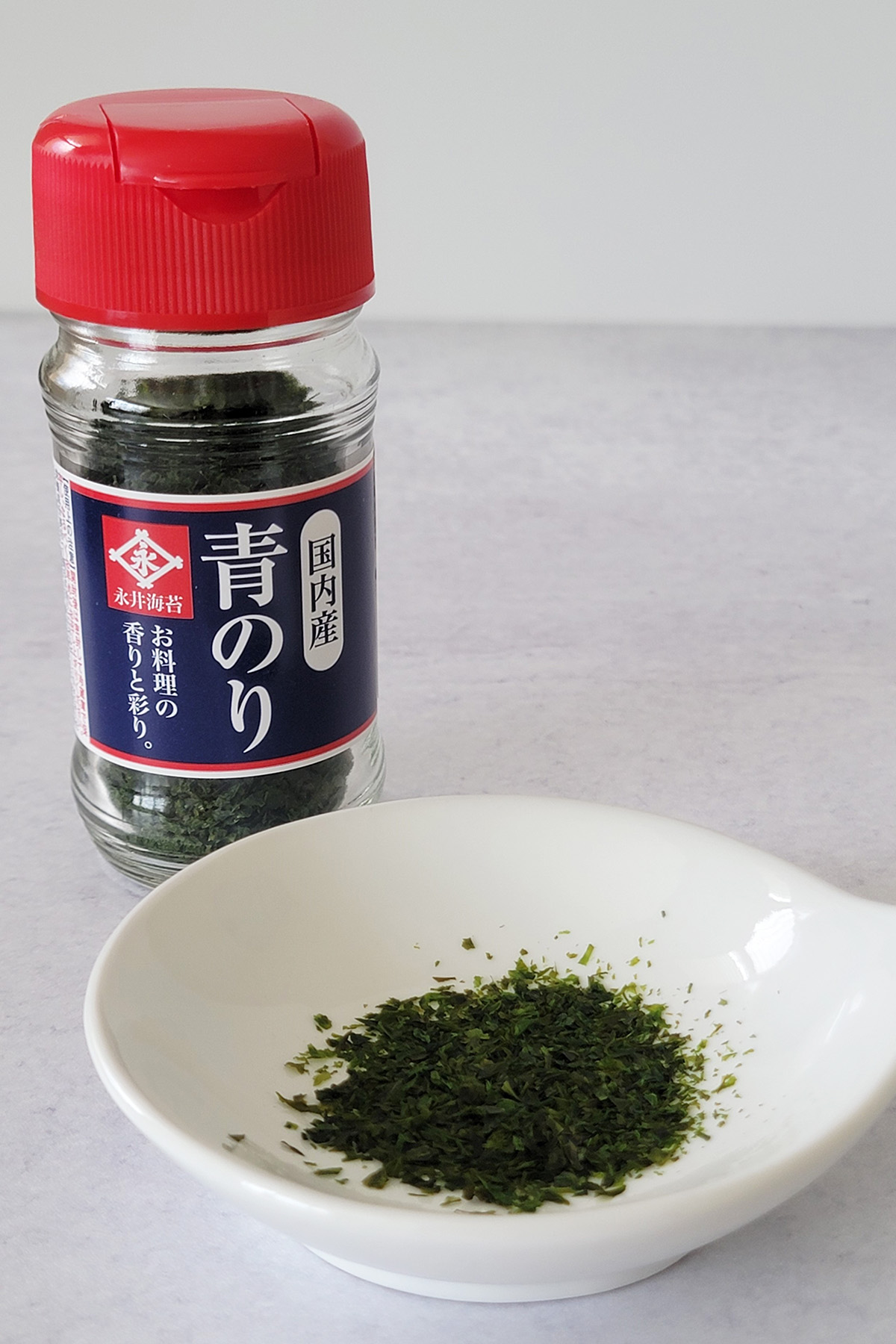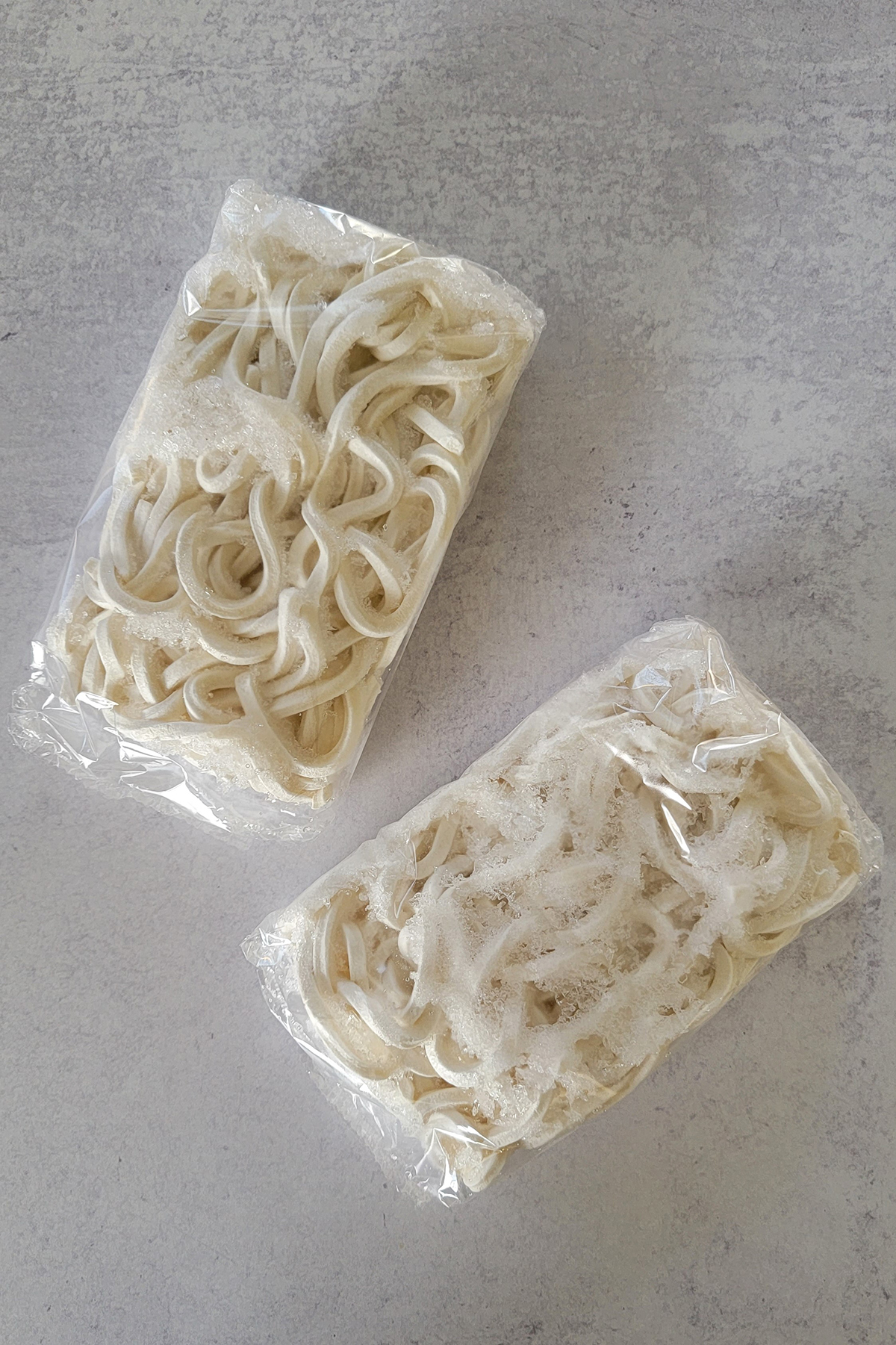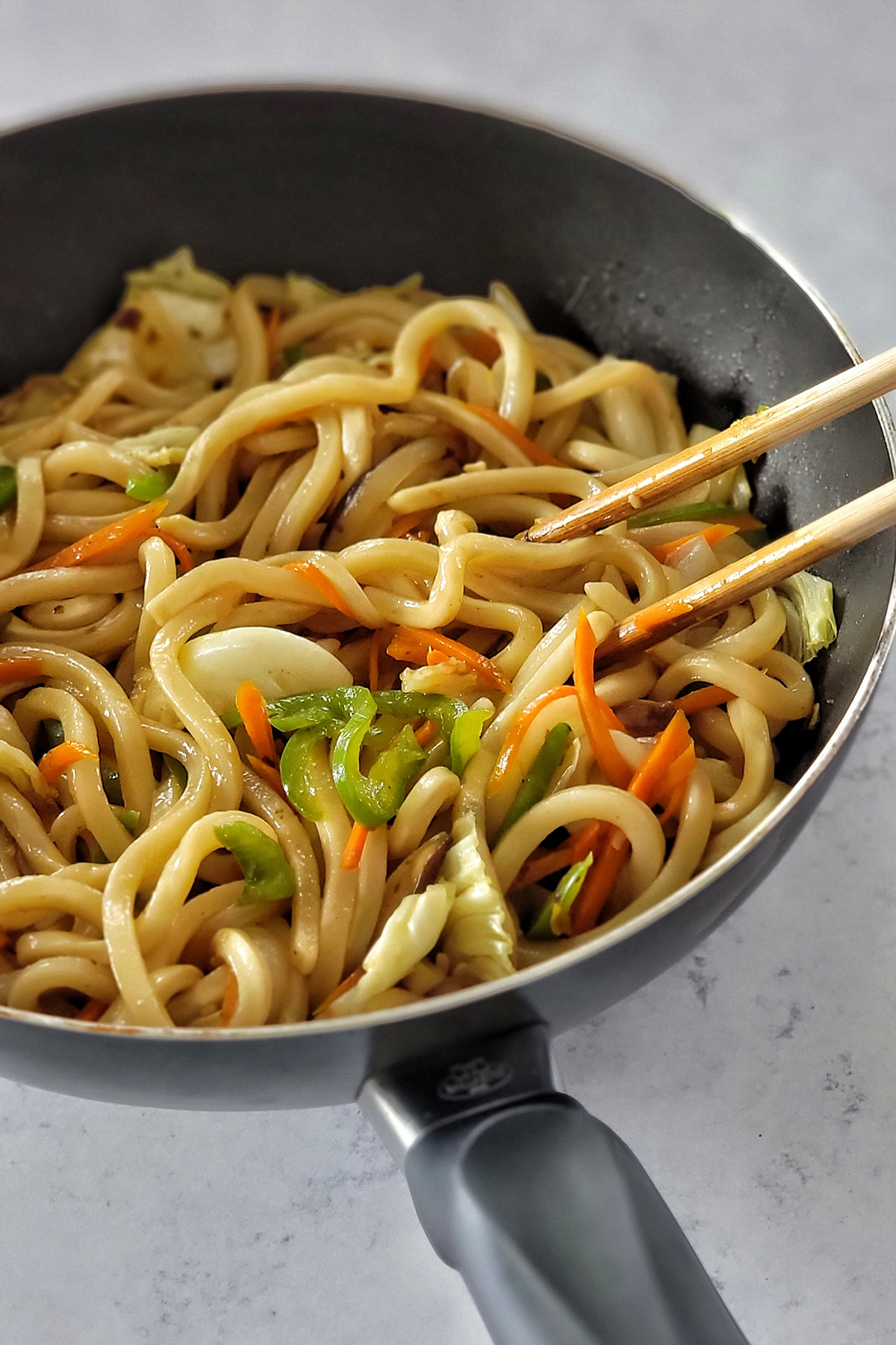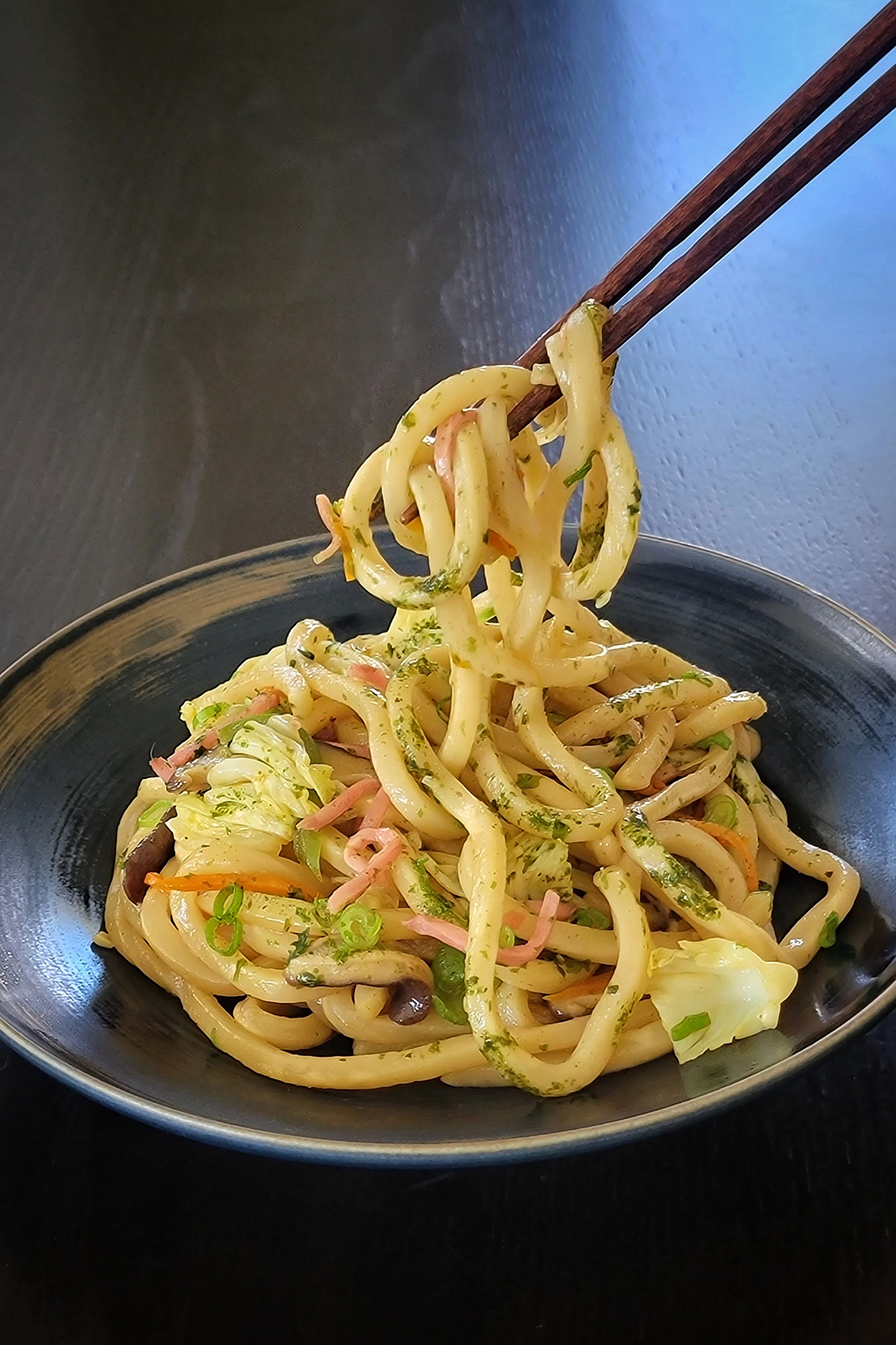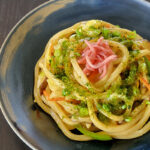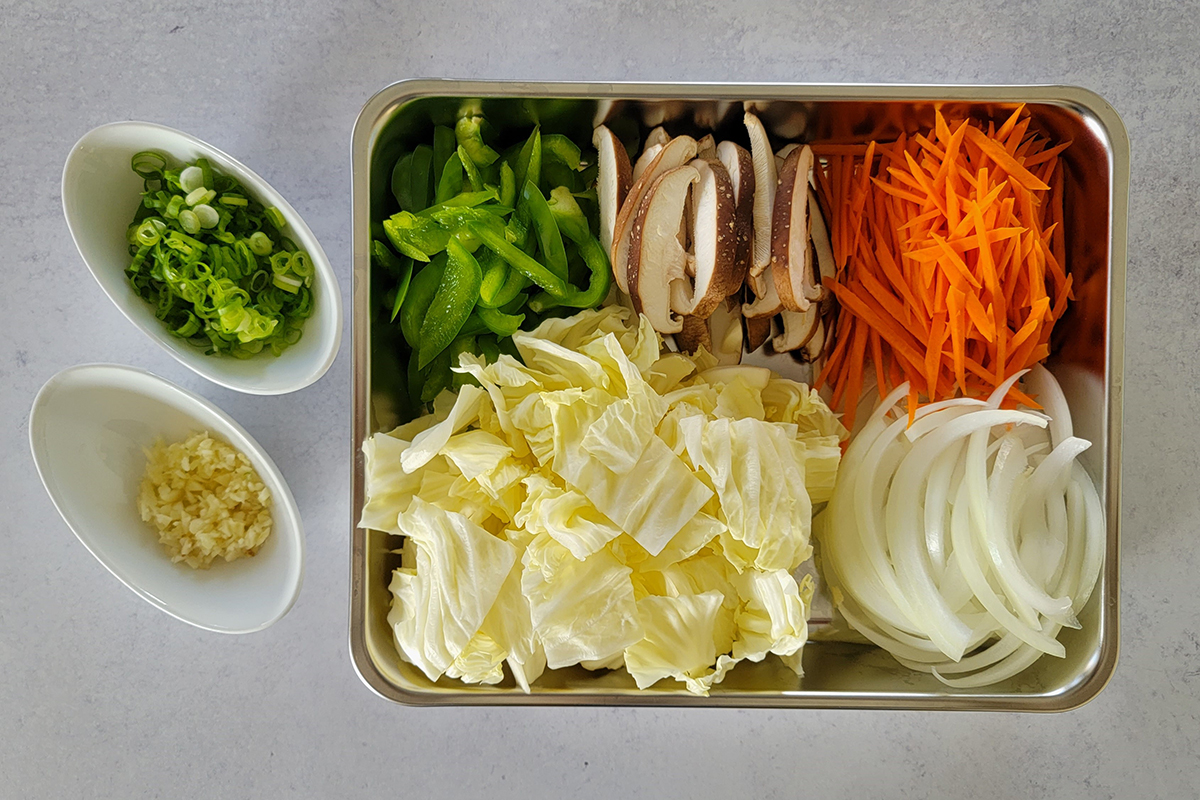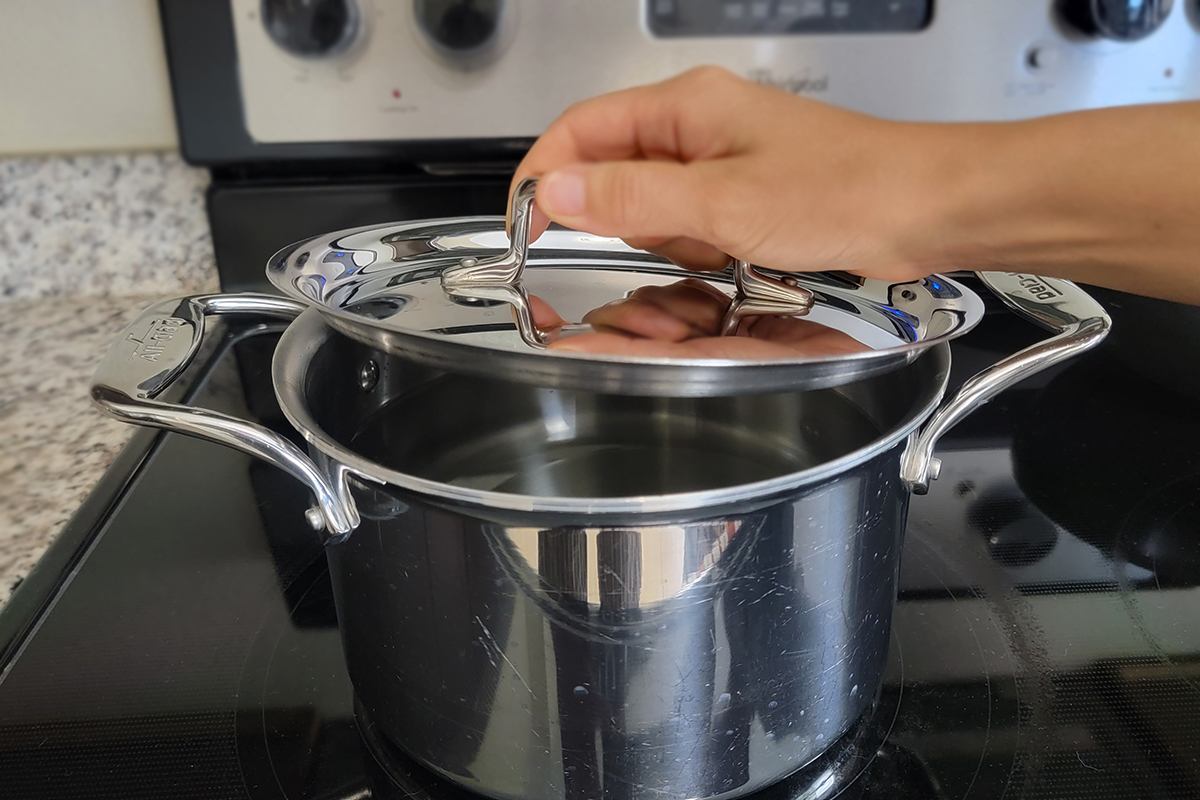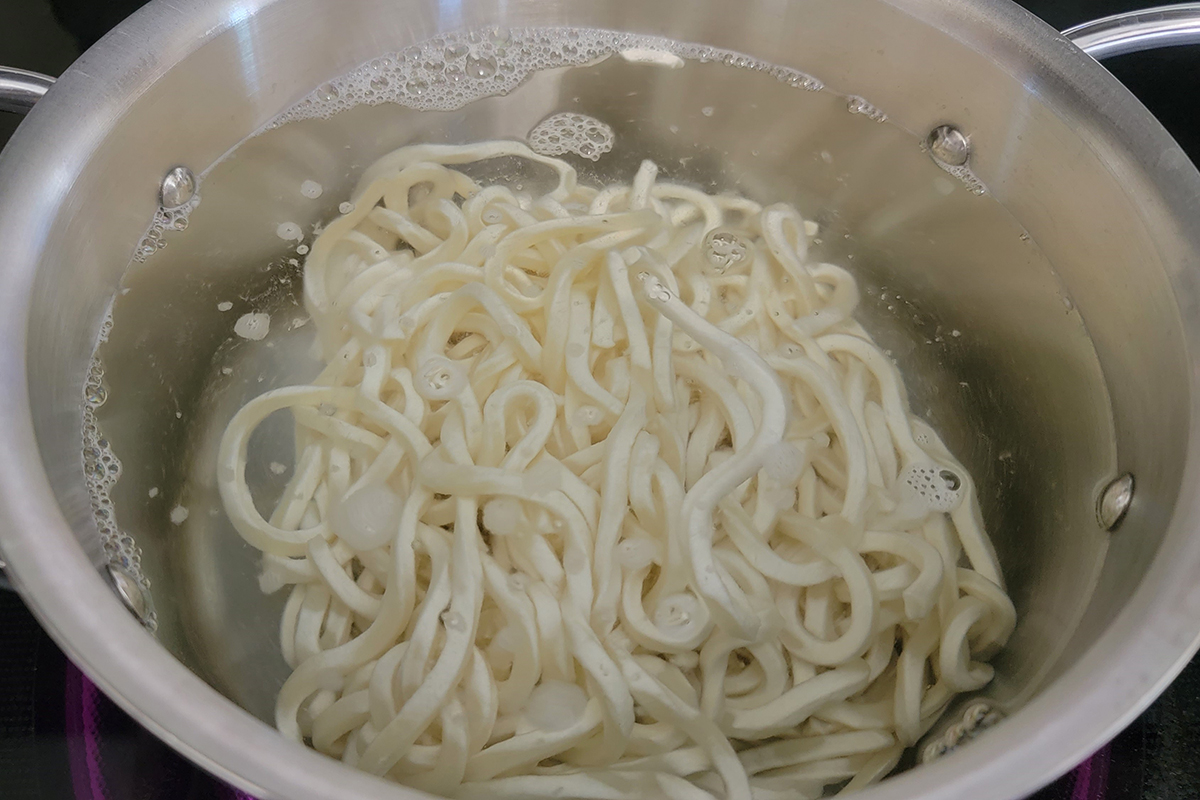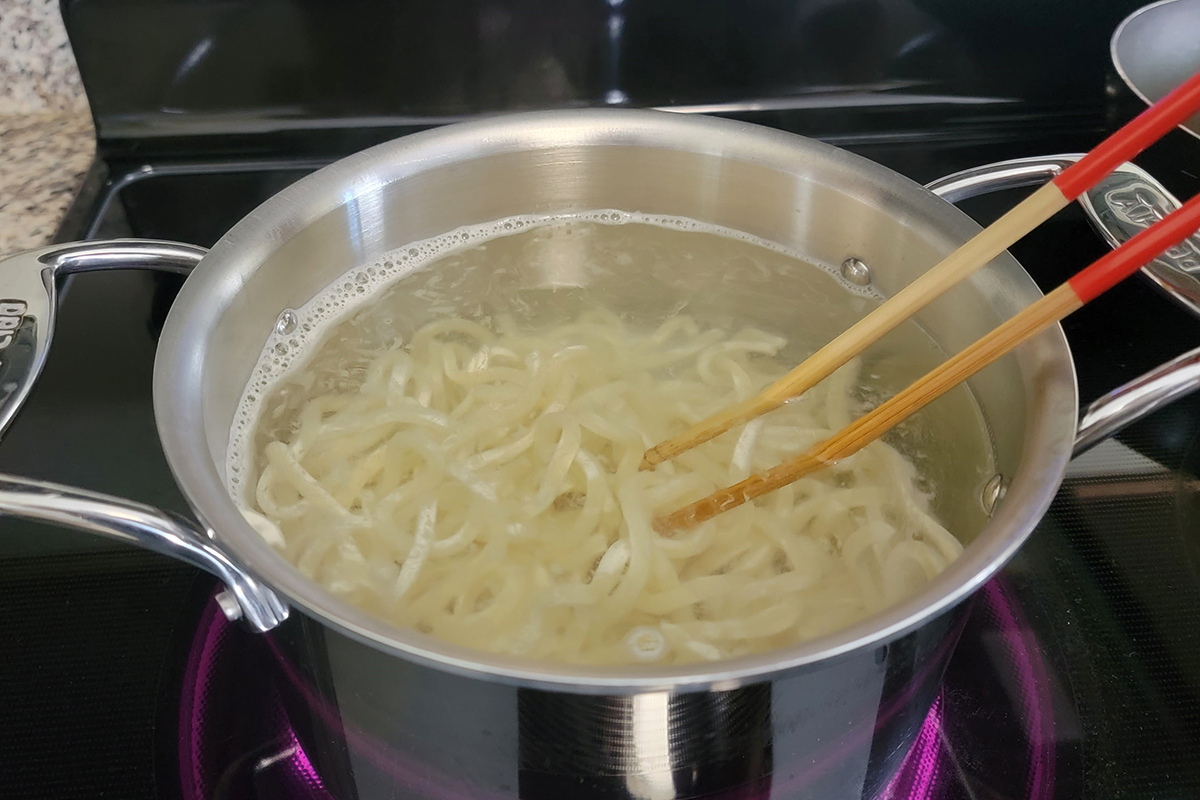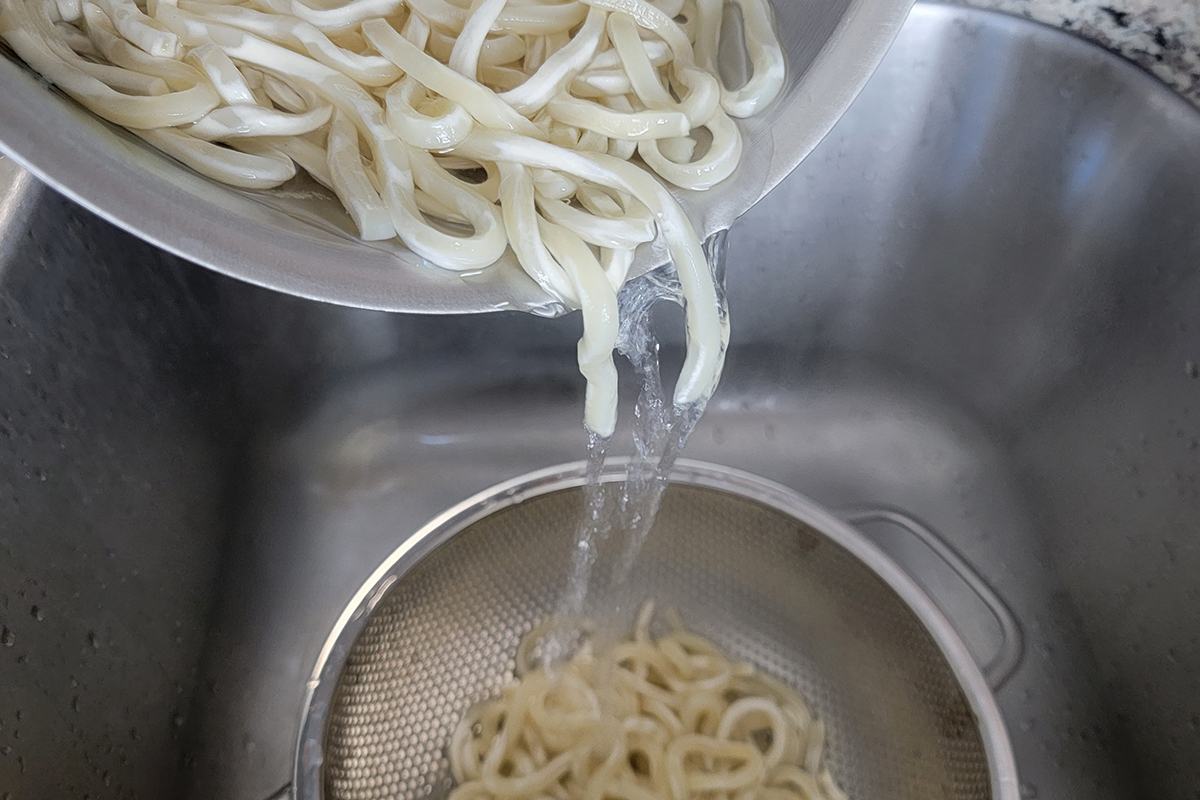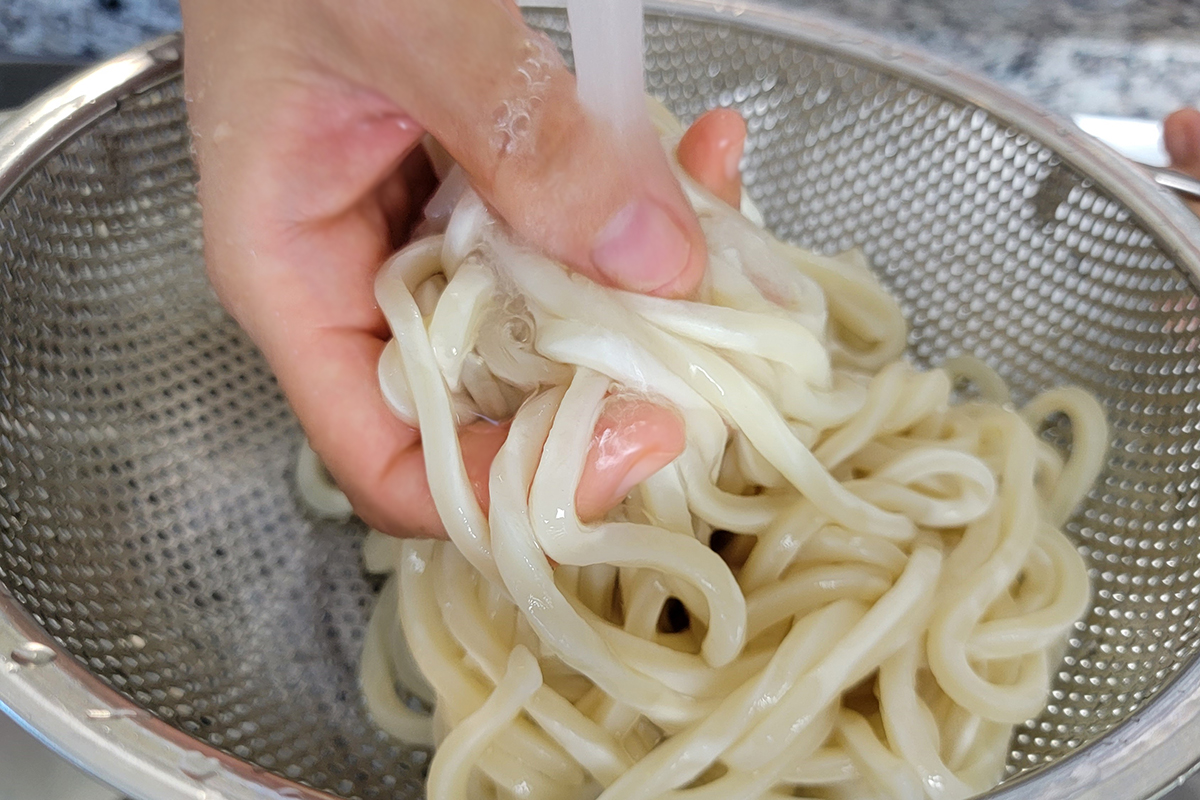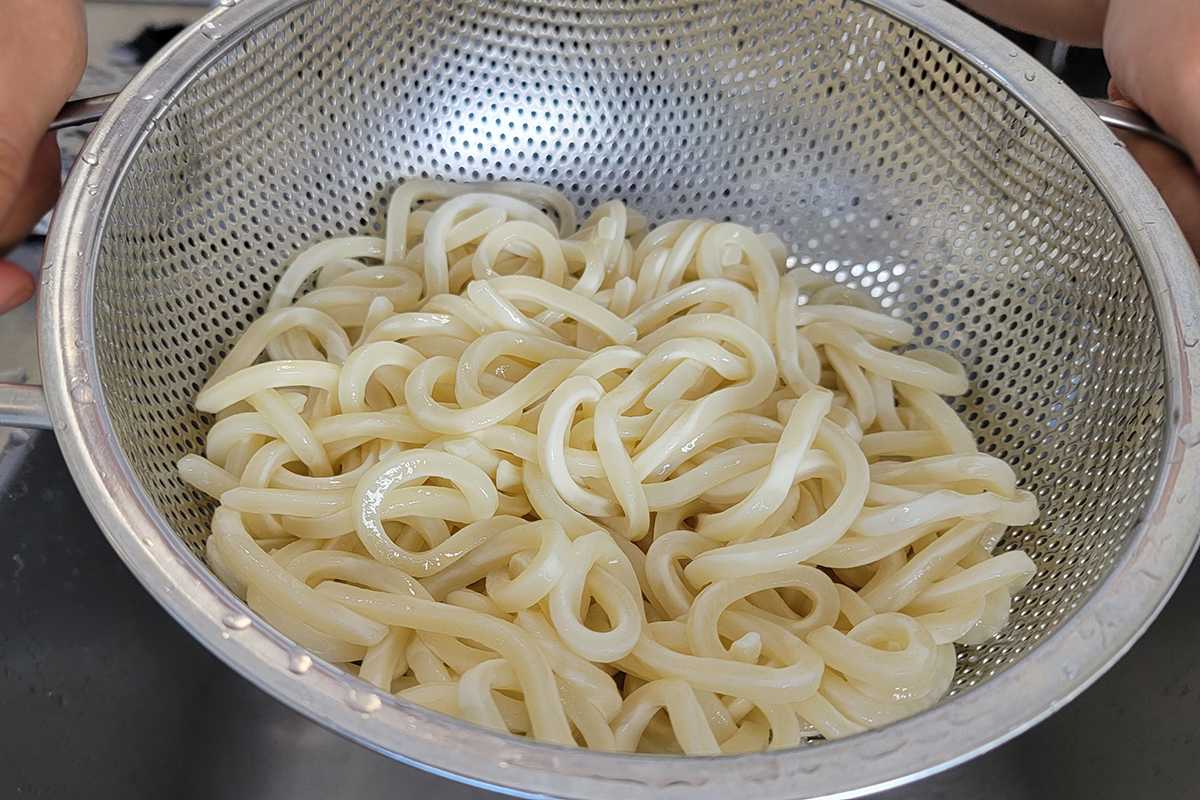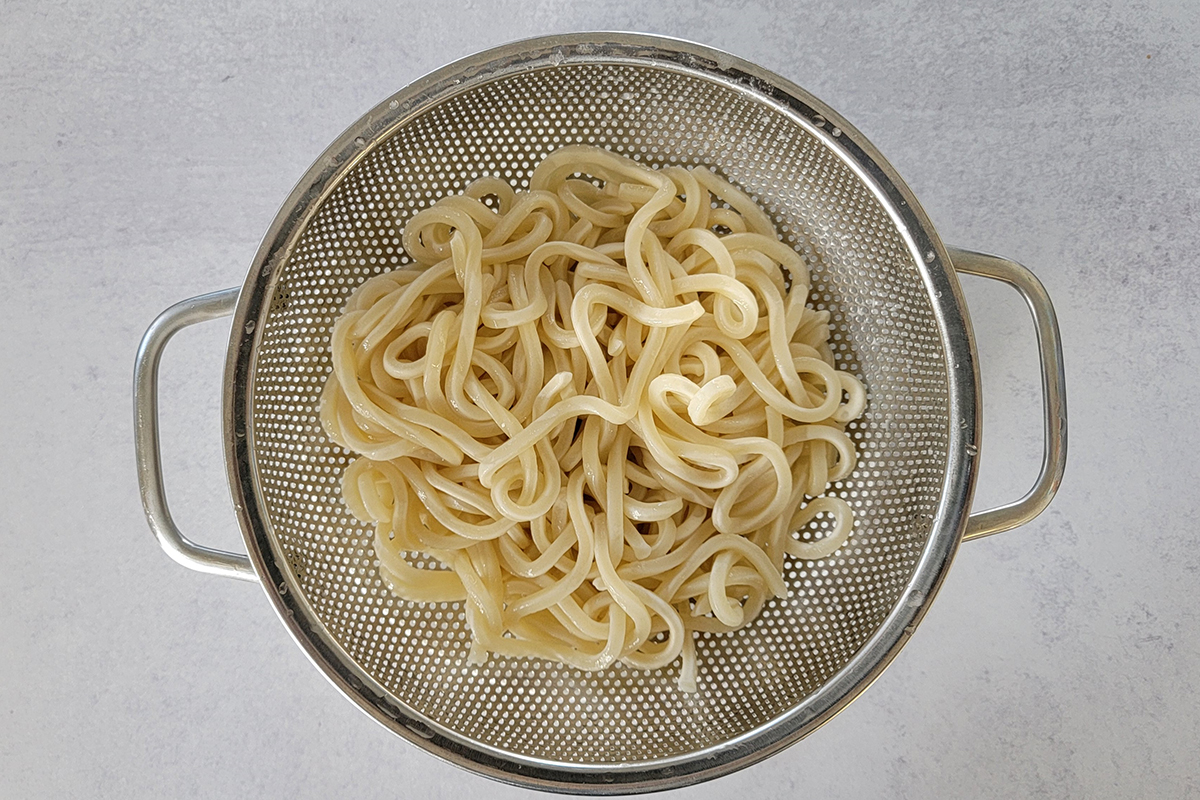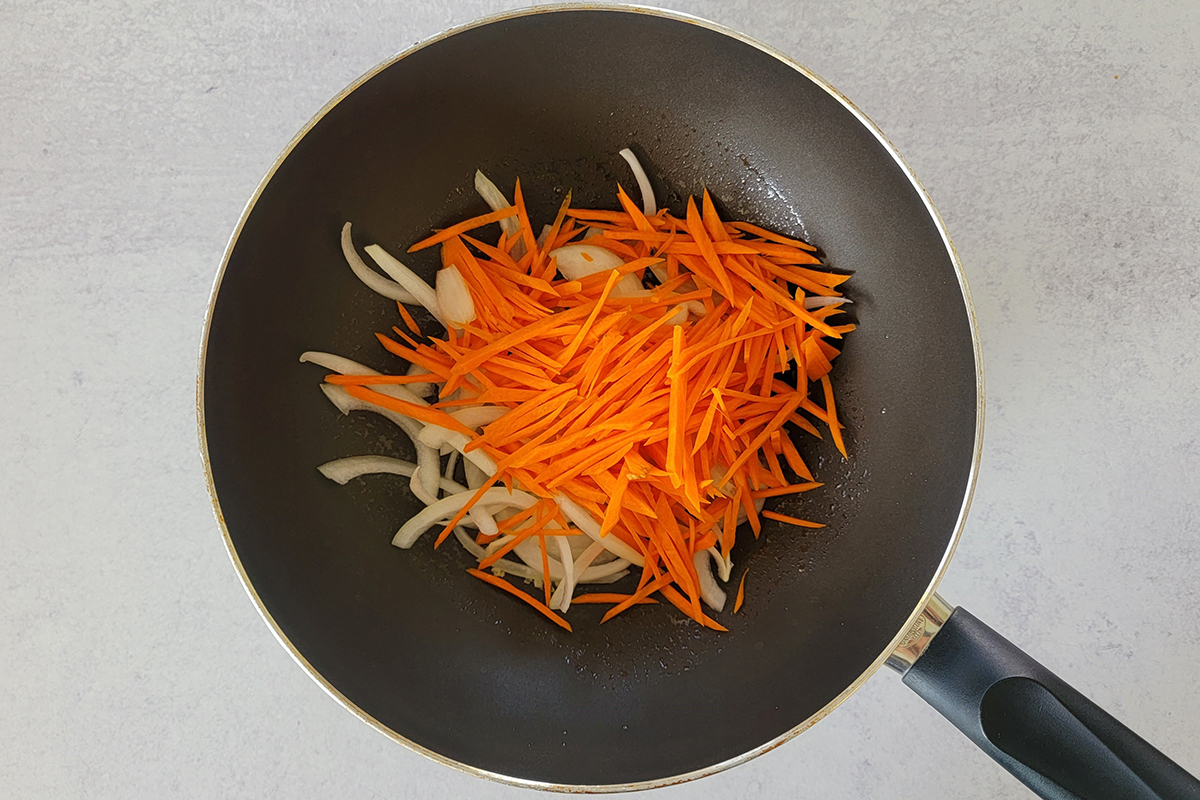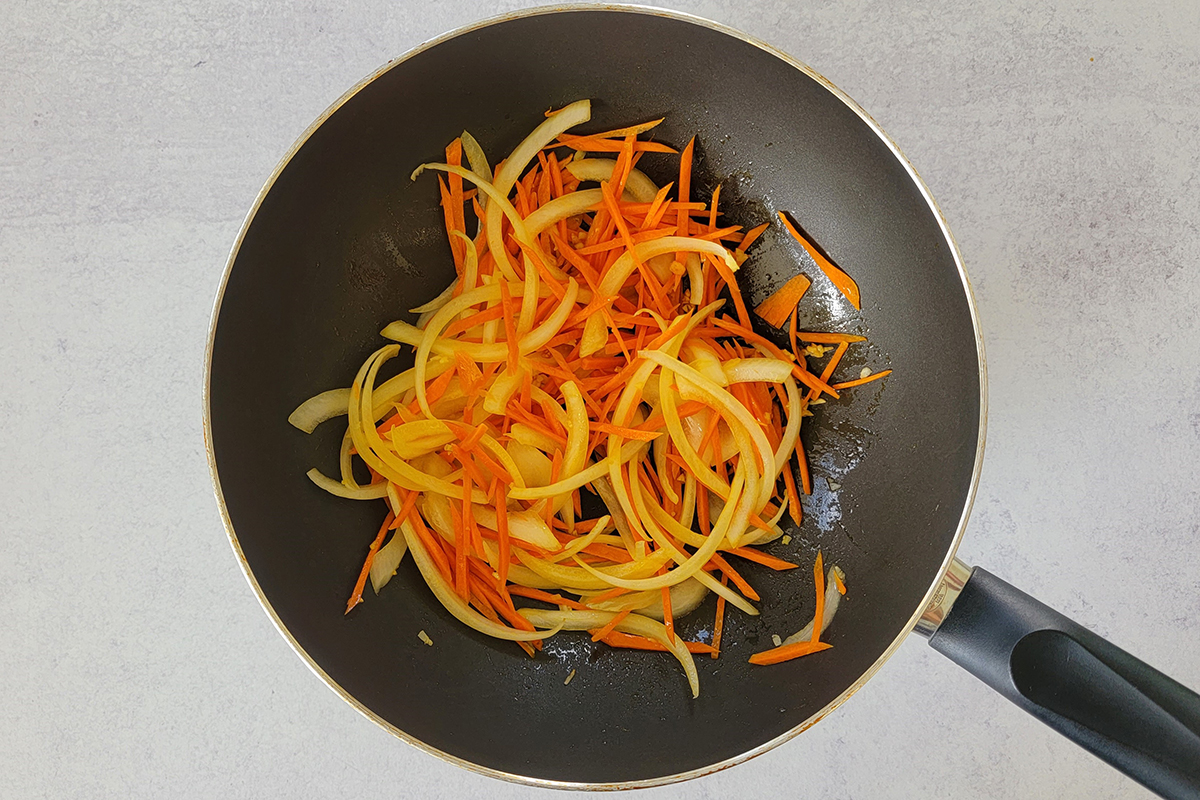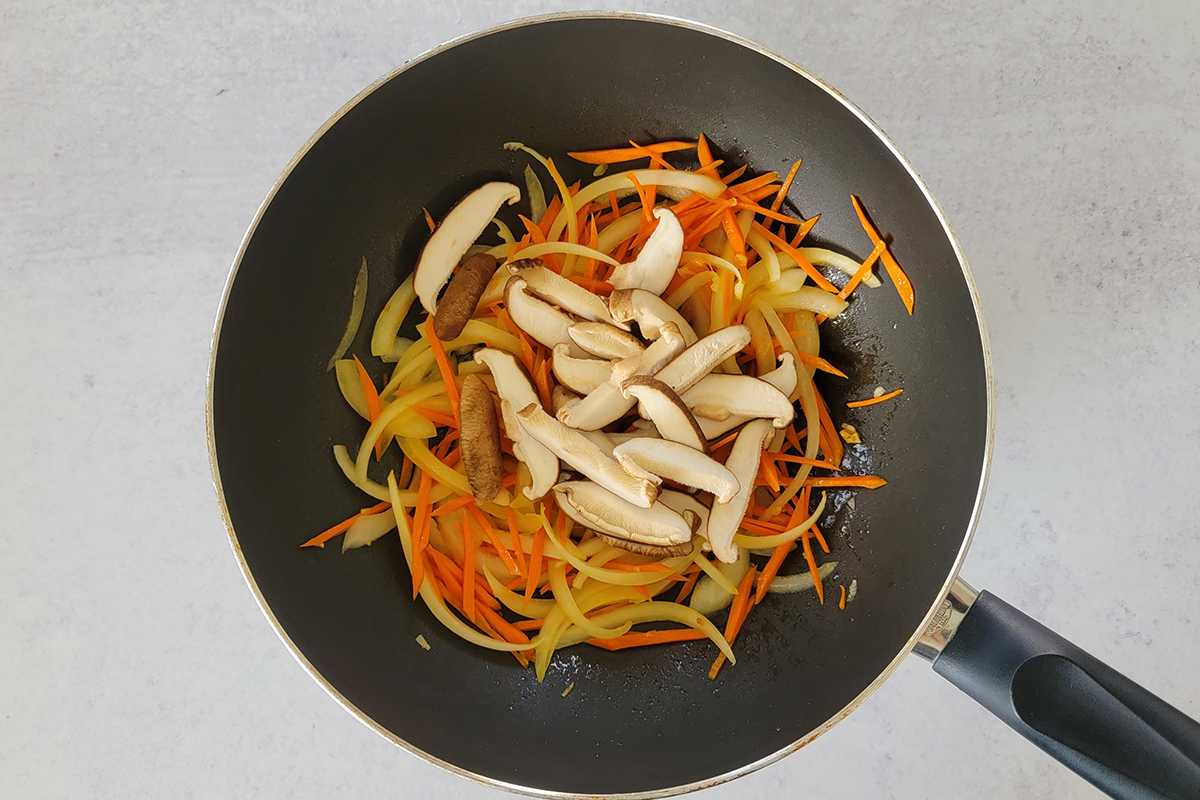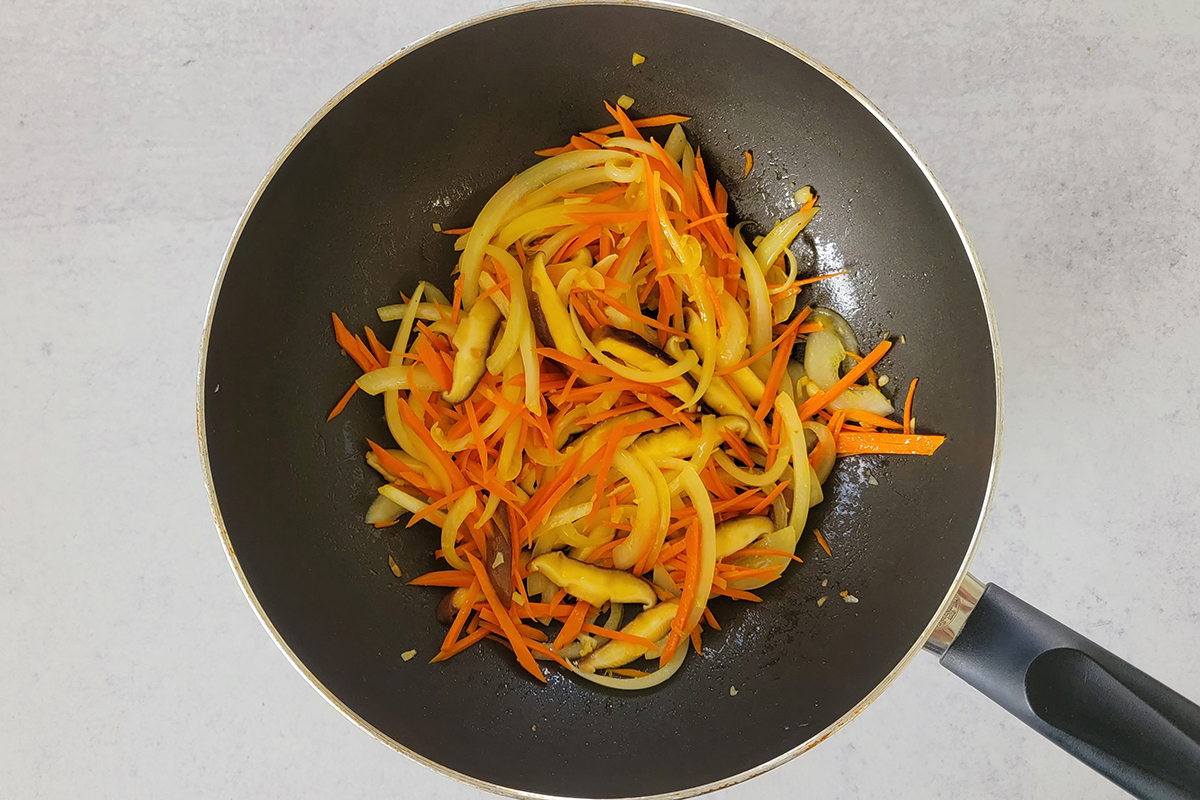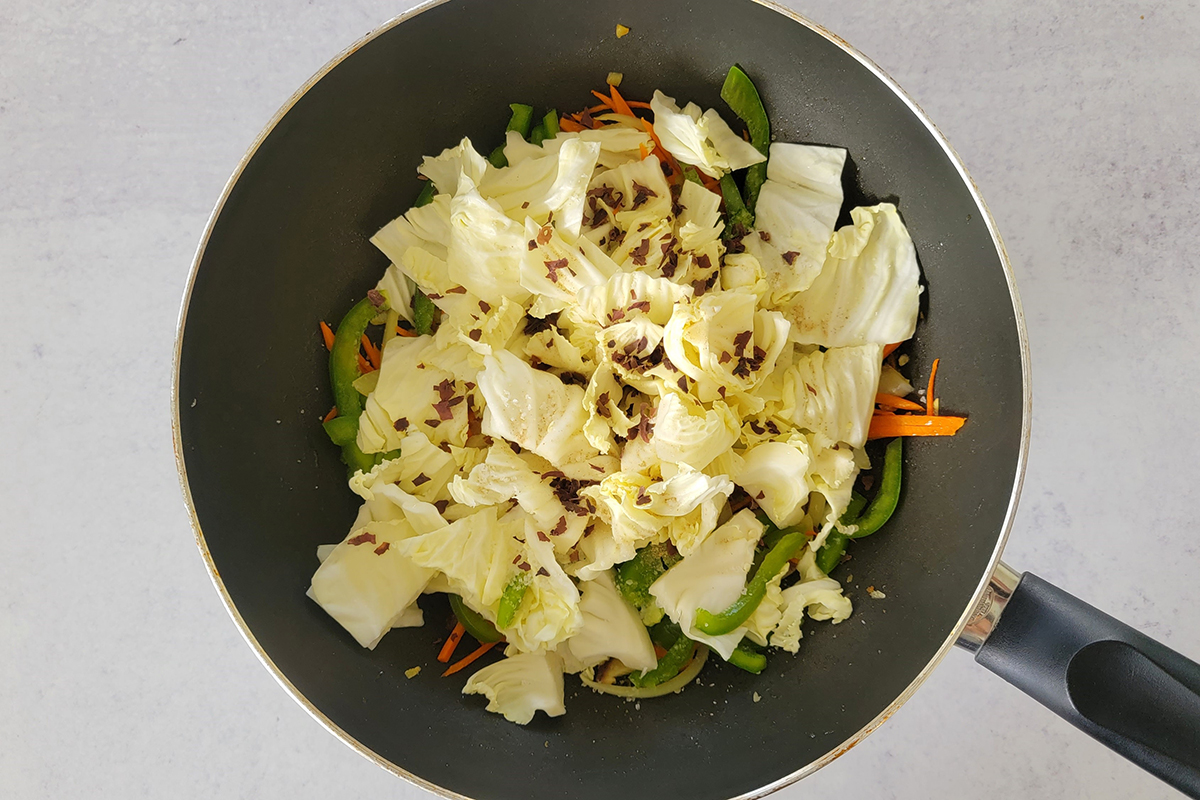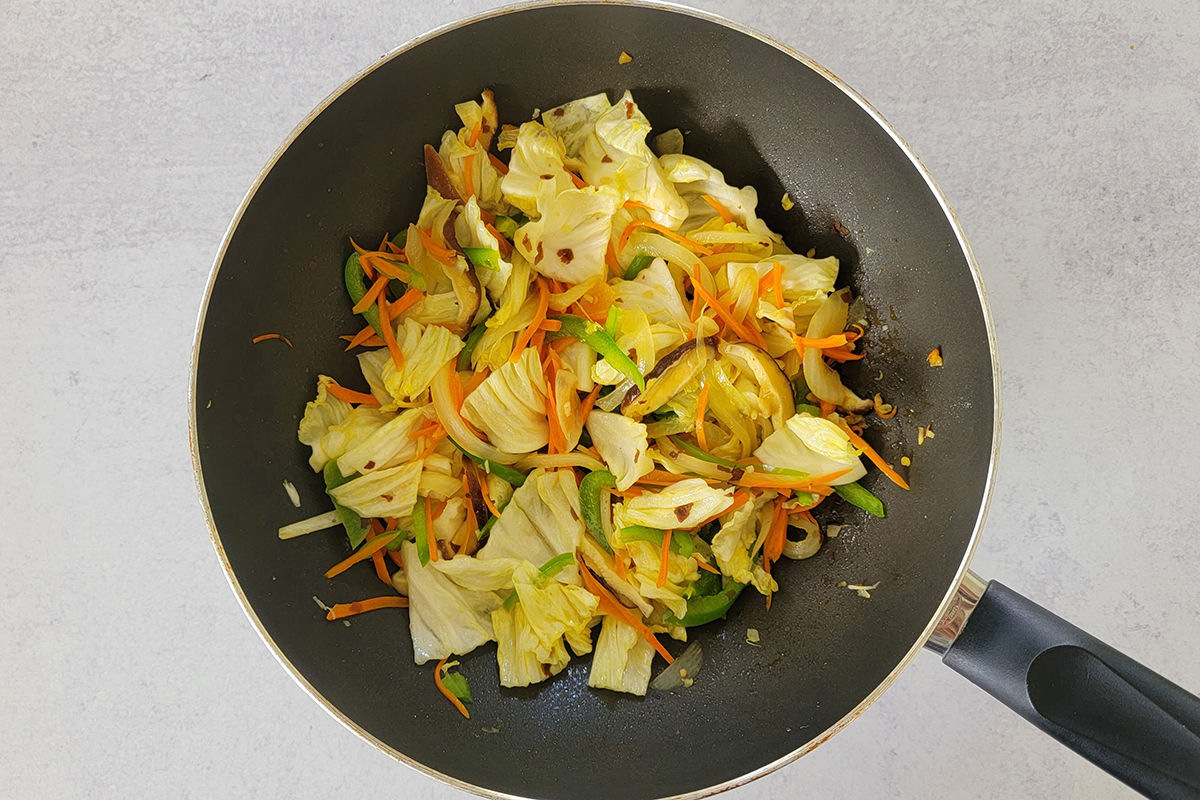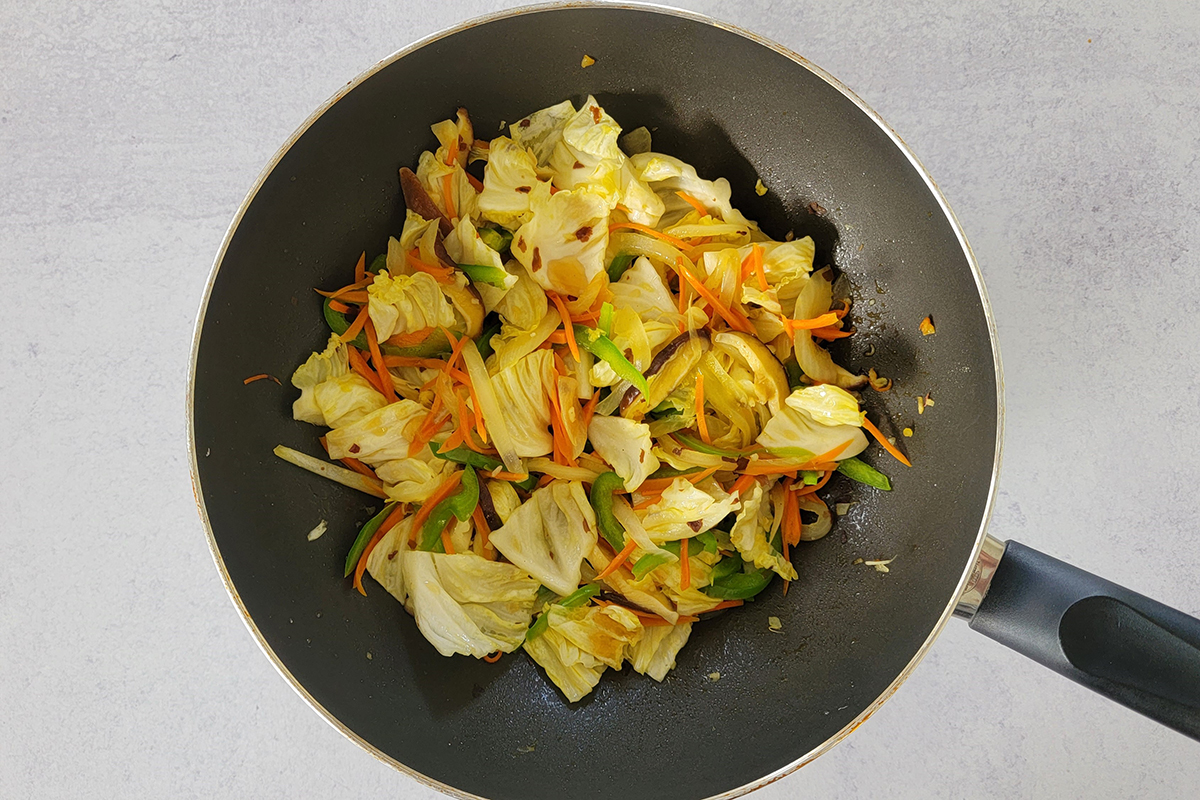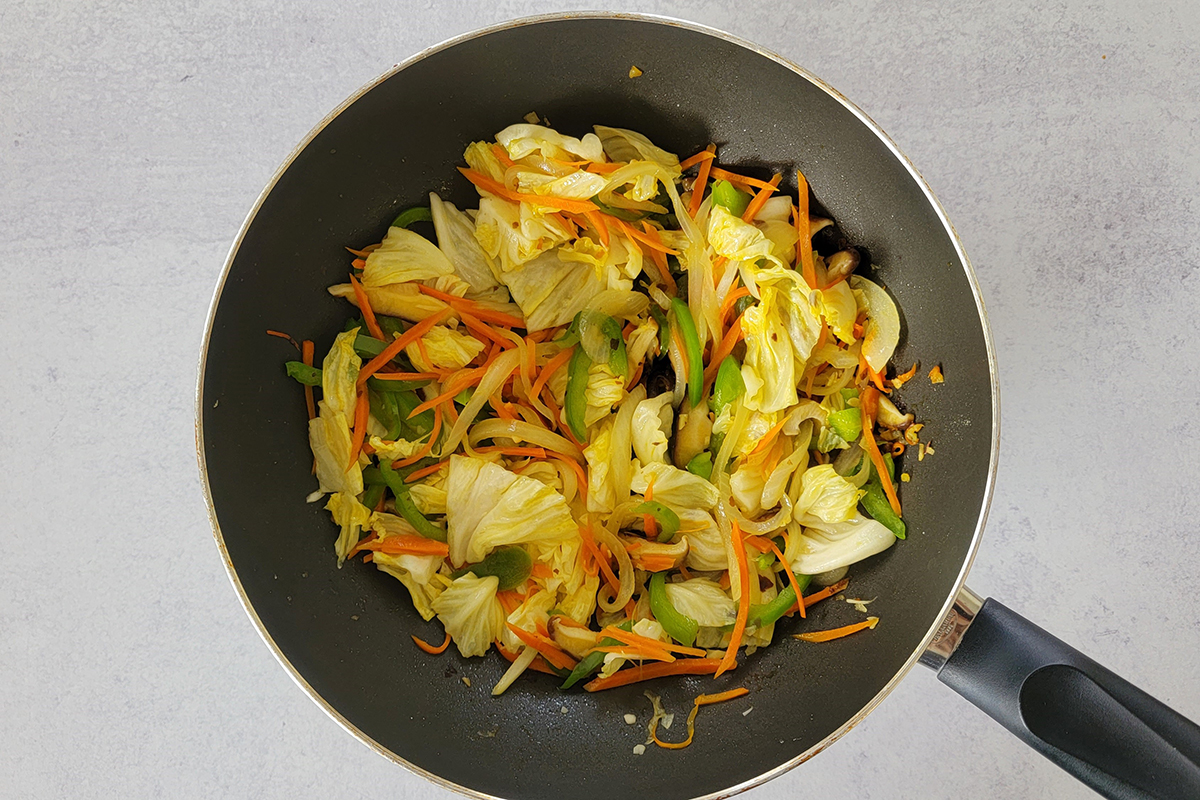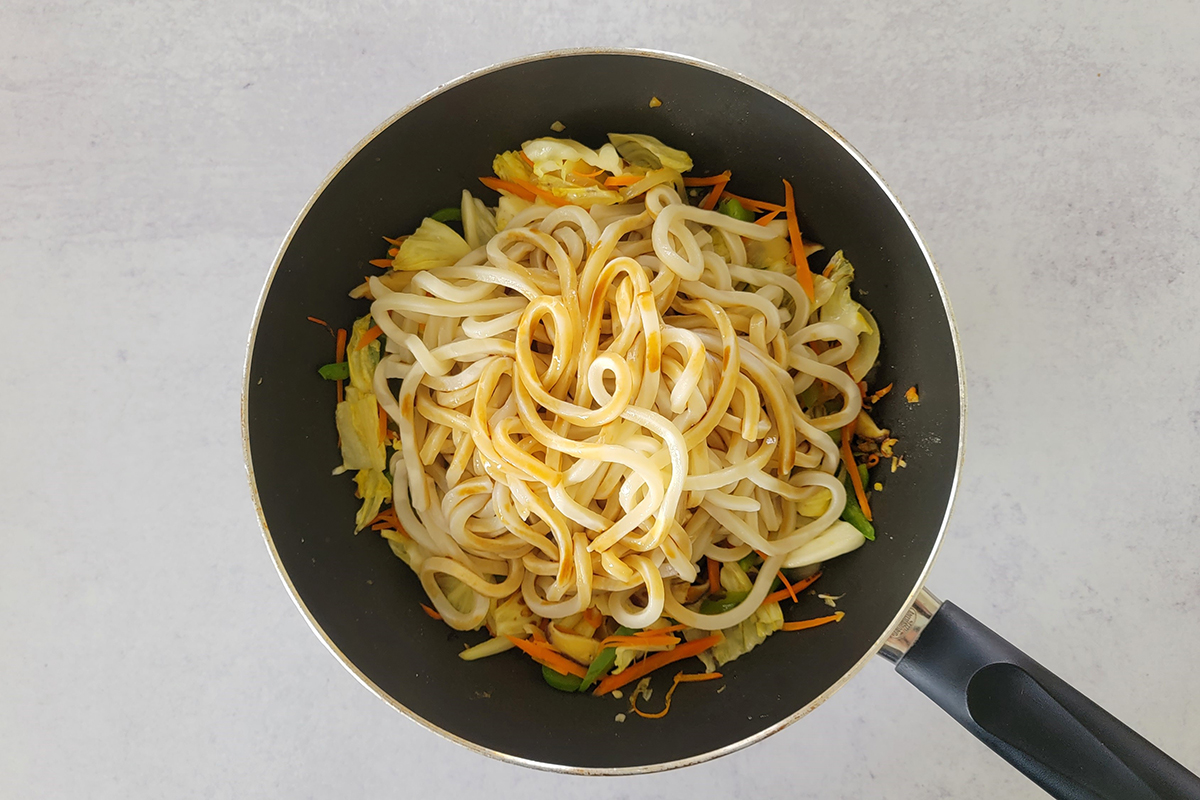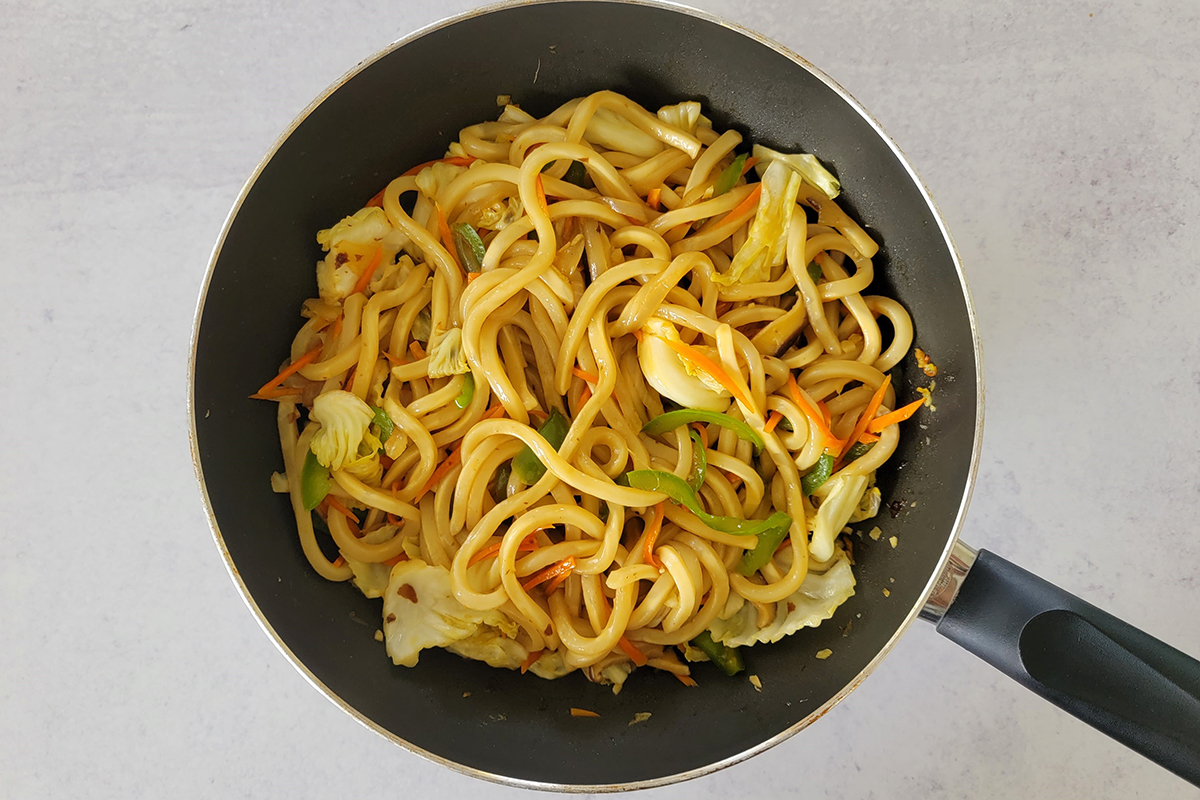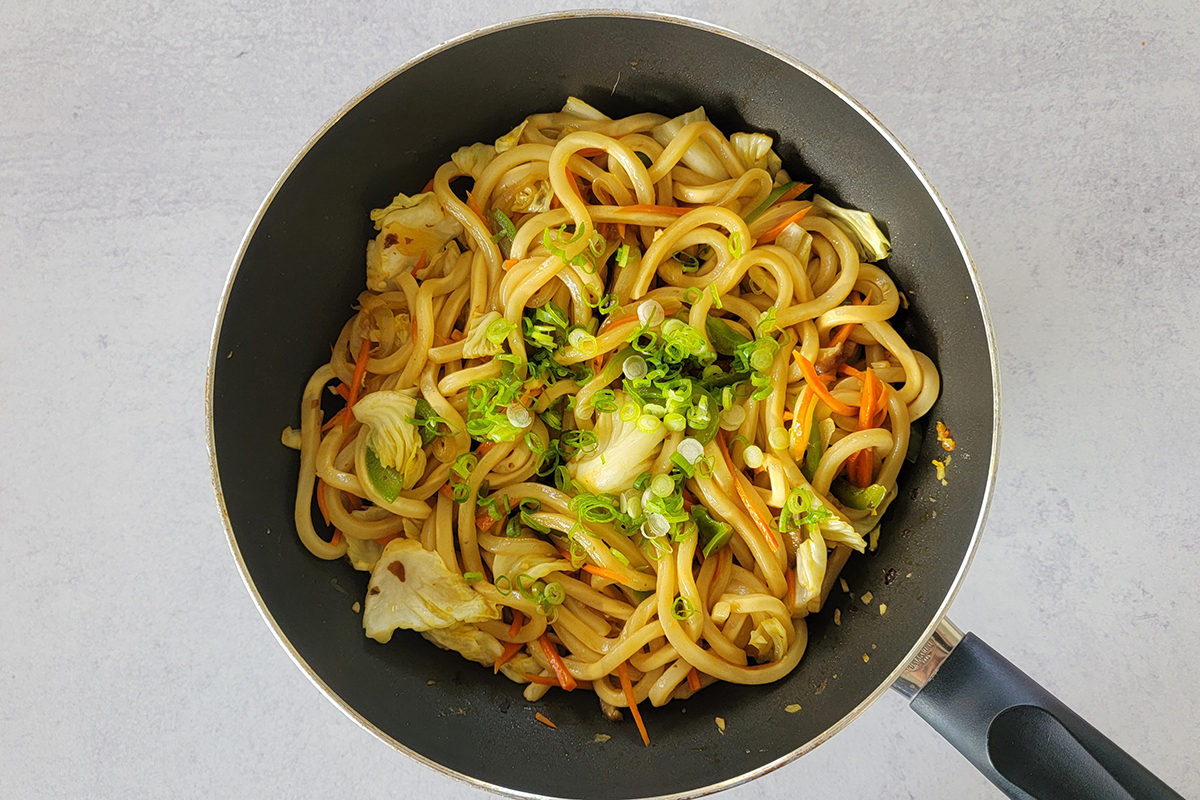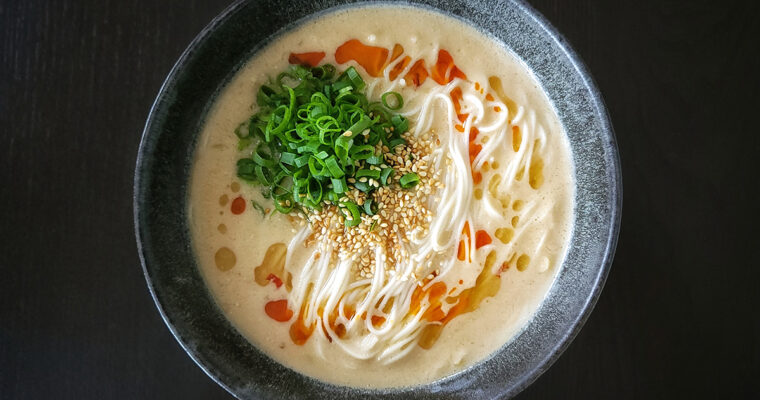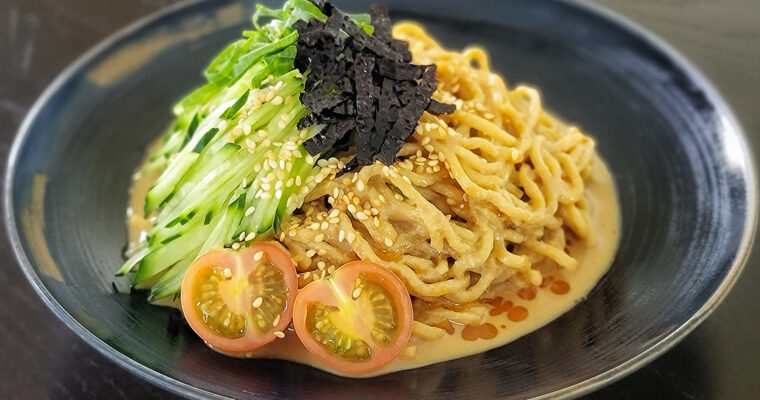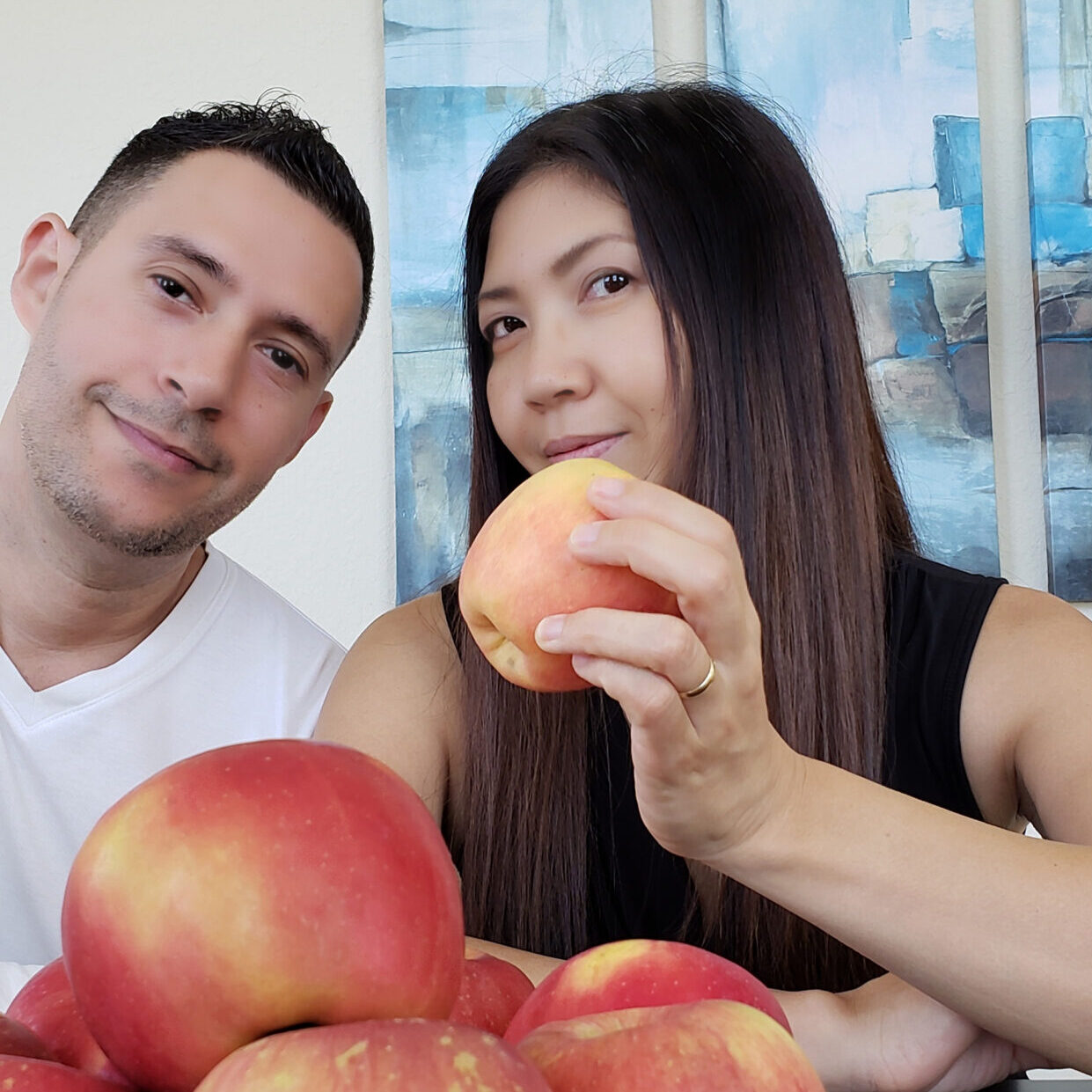Last Updated on June 3, 2023
[ヴィーガン焼うどん]
Vegan Yaki Udon is soy sauce flavored Japanese stir-fried udon noodles made with veggies and topped with unique Japanese condiments, beni shoga and aonori. This vegan arrangement of yaki udon is very forgiving and easy to make.
What is Yaki Udon?
Yaki udon is basically a Japanese stir-fried noodle dish made with udon noodles. In Japanese, yaki [焼き] means “fried or stir-fried” and udon [うどん] is udon noodles.
You might be familiar with yakisoba (or yaki-soba) which is also a Japanese stir-fried noodle. The noodles for yakisoba are quite similar to the ones used for ramen (Chinese style noodles.)
Yaki udon is the same concept as yakisoba but the only difference is the noodles. Instead of ramen-type noodles, yaki udon is made with udon noodles.
Both yaki udon and yakisoba are typically seasoned with Japanese version of Worcestershire sauce. It’s loaded with some veggies and meat/seafood. For the Japanese, it’s one of those inexpensive comfort food that’s also quick to make.
Vegan Yaki Udon
As mentioned above, yakisoba typically has meat/seafood and seasoned with non-vegan sauce. Good news is that this is very easy to make it vegan!
My vegan yaki udon is seasoned with soy sauce. I know it’s slightly different than the traditional one but still capturing the flavors from the original.
Some of the main ingredients for vegan yaki udon are:
- Thick Udon Noodles
- Green Cabbage
- Onion
- Carrot
- Green Bell Pepper
- Beni Shoga (Japanese red pickled ginger)
- Aonori (Japanese green seaweed flakes)
It’s very forgiving so you could use any veggies of your choice as long as you use the two key toppings and the right choice of udon noodles.
Key Toppings
What makes the yaki udon authentically Japanese is the topping!
- Beni Shoga (Japanese red pickled ginger)
- Aonori (Japanese green seaweed flakes)
Both beni shoga and aonori is uniquely Japanese and often used in okonomiyaki (Japanese savory pancakes.) Beni shoga gives a briny & tangy accent to the dish and aonori gives an intense but pleasant ocean flavor and a touch of umami.
I use beni shoga (vegan) from Gold Mine Natural Foods and aonori from Umami Insider. You can also find something similar at Asian grocery stores or most online stores.
Choice of Udon Noodles
One of the key ingredients to make authentic yaki udon is to use the right type of udon noodles.
There are different types of udon noodles available such as:
- Dried udon noodles
- Cooked fresh udon noodles (pre-cooked)
- Frozen udon noodles (pre-cooked)
But there is only one choice that I’d go for making yaki udon and it’s the FROZEN UDON NOODLES!
As you may see, this type of udon noodles are really thick and that’s what you want to use for yaki udon!
Often times, this type of thick udon noodles has the label “sanuki style.”
Sanuki [讃岐] is a region in Kagawa prefecture [香川県] which is located in the south-western part of Japan. Kagawa is known for the origin of the thick & extra chewy udon noodles so much so that the prefecture has a nick name of “Udon-ken [うどん県]” which literally means “udon prefecture.”
The thickness plays a big role in giving the chewy (firm) texture that you need for this vegan yaki udon.
In the US, you can find them in either the freezer section at most Asian grocery stores. Some regular grocery stores may carry them as well but you may need to look harder.
You might want to double check the ingredients! To my surprise, I’ve seen some non-vegan thick udon noodles contains eggs. In case you are wondering, udon is NOT egg noodles. So, it should be just flour, water, salt and some kind of starch agent to give that texture you are looking for.
As soon as you find the particular udon, you are good to go! No luck? Well, you can still make it with other varieties of udon but it won’t be as good as otherwise.
Be sure to check out the “Step-by-Step Instructions (w/ Photos)” after the Printable Recipe!
Vegan Yaki Udon (Japanese Stir-Fried Udon Noodles)
Ingredients
Yaki Udon
- 2 servings frozen thick udon noodles 1 serving = about 9 oz / 260 g
- 2 tsp neutral oil
- 1 clove garlic minced
- 4 oz yellow onion thinly sliced (4 oz = about 1cup)
- 2 oz carrot julienned (2 oz = about 1/2 cup)
- 3 shiitake mushrooms trim off the end and thinly sliced
- 4 oz green cabbage roughly chopped (4 oz = about 1 cup)
- 2 oz green bell pepper thinly sliced (2 oz = about 1/2 cup)
- 1 tsp dulse flakes optional
- 1/2 tsp sea salt
- 1/8 tsp white pepper or black pepper
- 1 tbsp mirin
- 2 tbsp soy sauce
- 1 scallion thinly sliced
Toppings
- aonori Japanese dried green seaweed flakes
- beni-shoga Japanese red pickled ginger
- Japanese shichimi pepper flakes optional
Instructions
- Boil water in a medium or large pot for cooking udon noodles. Once boiling, start cooking frozen udon noodles for 1-2 minute (or follow the instructions on package.) Use a colander to drain. Rinse under running water to remove starch. Shake off the excess water and set it aside.
- Heat up a non-stick frying pan at medium high heat. Pour neutral oil and add garlic. Cook for a minute or so until aromatic.
- Add yellow onion and carrot. Cook for 2 minutes. Next, add shiitake and cook for 2 minutes. Then, add cabbage, green bell pepper, dulse flakes, and season with sea salt and white pepper. Cook for another 2 minutes. Once the veggies are cooked, add mirin and cook for about 30 seconds to 1 minute until the alcohol is cooked off.
- Transfer the cooked udon noodles to the pan. Tips: If the udon is too sticky (from the starch) at this point, rinse again under running water and shake off the excess water, then add to the pan.) Add soy sauce and continue to stir until udon noodles are reheated. Lastly, add scallions and give a quick stir.
- To serve, sprinkle aonori and beni-shoga on top. Use shichimi pepper (optional) for a spicy kick.
Notes
Choice of Udon Noodles
- For this recipe, it’s best to use frozen thick udon (often labeled as sanuki-style udon) which gives the chewy bite.
- Frozen udon noodles are pre-portioned and pre-cooked. It takes less than 2 minutes to be ready. It’s a convenient food item to keep in freezer!
Dulse Flakes
- Dulse flakes are dried kelp which adds umami taste and depth to the kimchi.
Mirin
- Mirin is Japanese sweet cooking rice wine which adds the natural sweetness and depth to the flavor. Use high quality mirin with no high fructose corn syrup.
- I use Organic Mikawa Mirin or Organic Genuin Mirin from Gold Mine Natural Foods.
Beni Shoga
- Beni shoga is Japanese red pickled ginger that’s briny & tangy.
- Beni shoga is quite salty by itself so be sure not to put too much salt when adjusting the seasoning with salt.
- Using extra beni shoga as a garnish adds a nice & fresh accent to the flavor.
- Be sure to check out more information on Beni Shoga on Vegan Japanese Pantry Guide.
Aonori
- Aonori is Japanese dried green seaweed flakes that has more intense sea flavor and more fragrant compared to nori seaweed.
- Using nori seaweed will not have the same flavor.
- A little bit goes a long way. Adjust the amount to your taste preference.
- Be sure to check out more information on Aonori on Vegan Japanese Pantry Guide.
Step-by-Step Instructions (w/ Photos)
Prep: First, have all the veggies cut & sliced.
1. Boil water in a medium or large pot for cooking udon noodles.
Once boiling, start cooking frozen udon noodles for 1-2 minute (or follow the instructions on package.)
Use a colander to drain. Rinse under running water to remove starch.
Shake off the excess water and set it aside.
2. Heat up a non-stick frying pan at medium high heat. Pour neutral oil and add garlic. Cook for a minute or so until aromatic.
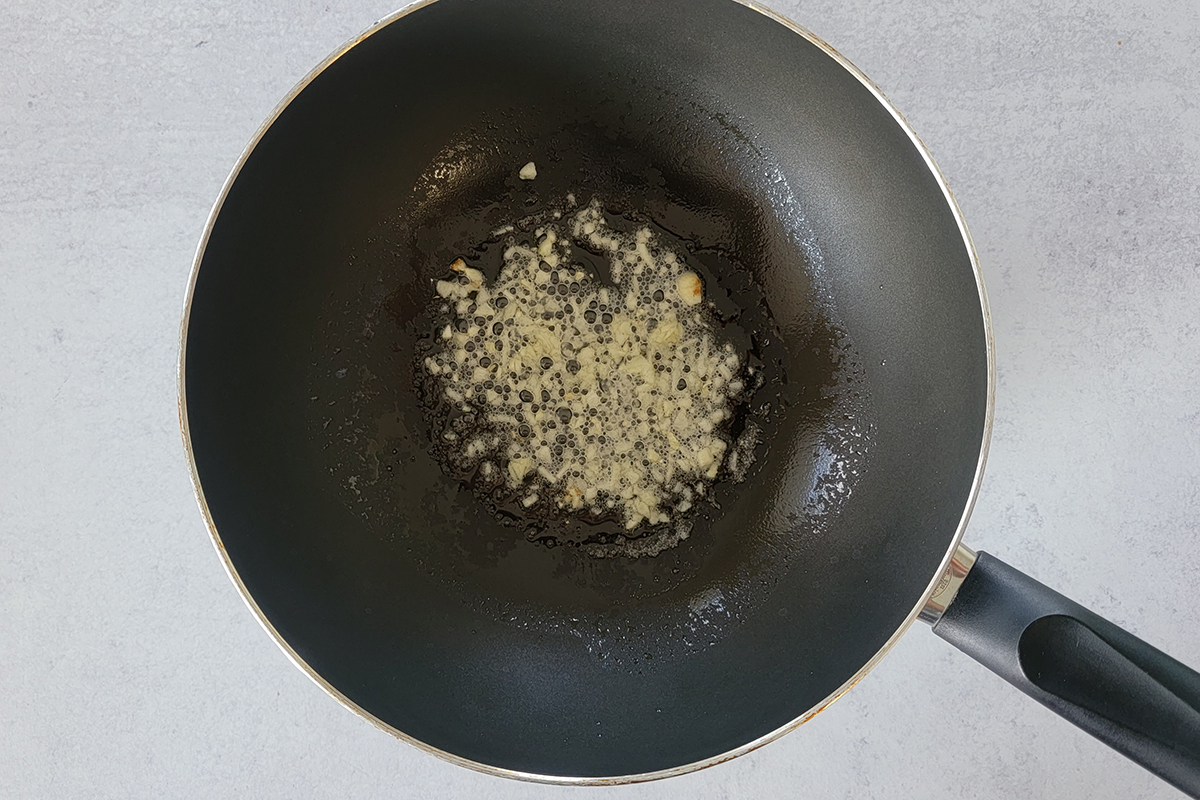
3. Add yellow onion and carrot. Cook for 2 minutes.
Next, add shiitake and cook for 2 minutes.
Then, add cabbage, green bell pepper, dulse flakes, and season with sea salt and white pepper. Cook for another 2 minutes.
Once the veggies are cooked, add mirin and cook for about 30 seconds to 1 minute until the alcohol is cooked off.
4. Transfer the cooked udon noodles to the pan. Tips: If the udon is too sticky (from the starch) at this point, rinse again under running water and shake off the excess water, then add to the pan.) Add soy sauce and continue to stir until udon noodles are reheated.
Lastly, add scallions and give a quick stir.
5. To serve, sprinkle aonori and beni-shoga on top. Use shichimi pepper (optional) for a spicy kick.
If you enjoy the recipe, please share, leave a comment below and tag us @plantbased_matters on Instagram! We appreciate your kind support 🙂
